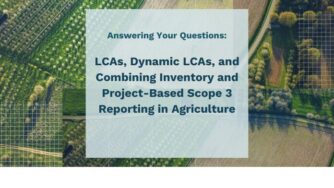With winds in excess of 120 miles per hour (mph), the August 2020 derecho lasted 14 hours and traveled 770 miles—from eastern South Dakota to western Ohio—at an average speed of 55 mph. For many farmers in central Iowa and northwest Illinois, the flattened fields and destroyed grain-handling facilities, farm buildings, houses and businesses left in its wake turned a potential record crop year into a nightmare. They needed to understand the derecho’s probable impact on their corn yields—fast.
CIBO’s yield simulator analyzed preliminary National Weather Service Storm Reports and National Oceanic and Atmospheric Administration (NOAA) data to identify the specific counties—located primarily in Iowa, Illinois and Indiana— that may have sustained crop damage from the derecho.
While the final impact to corn yield won’t be known until months from now, CIBO estimates the derecho caused a loss of 10-40% of the corn crop in this area as of fall 2020.
This infographic provides a map-based prediction of the yield impact across the regions affected by the derecho. CIBO’s calculations are based upon yields for counties that typically plant at least 25,000 acres of corn based upon the past 10 years of crop acreage data from the USDA Farm Service Agency.
Download the infographic below.
Regenerative agriculture is one solution to the climate crisis that is leading to more extreme weather events. CIBO is on a mission to scale regenerative agriculture to help mitigate climate change, advance food system resilience, and improve grower outcomes. To learn more about CIBO’s proprietary approach to yield forecasting, crop modeling, and carbon emissions calculations, and to find out how CIBO Impact can help your company meet its net zero emissions goals, contact us for a demo.
Download the infographic



